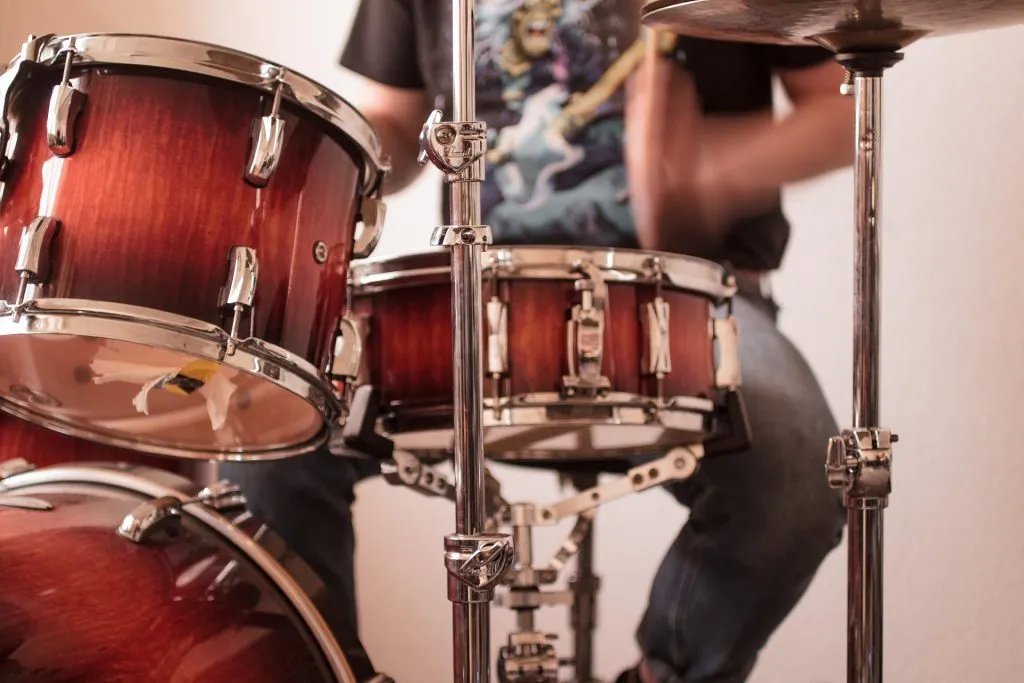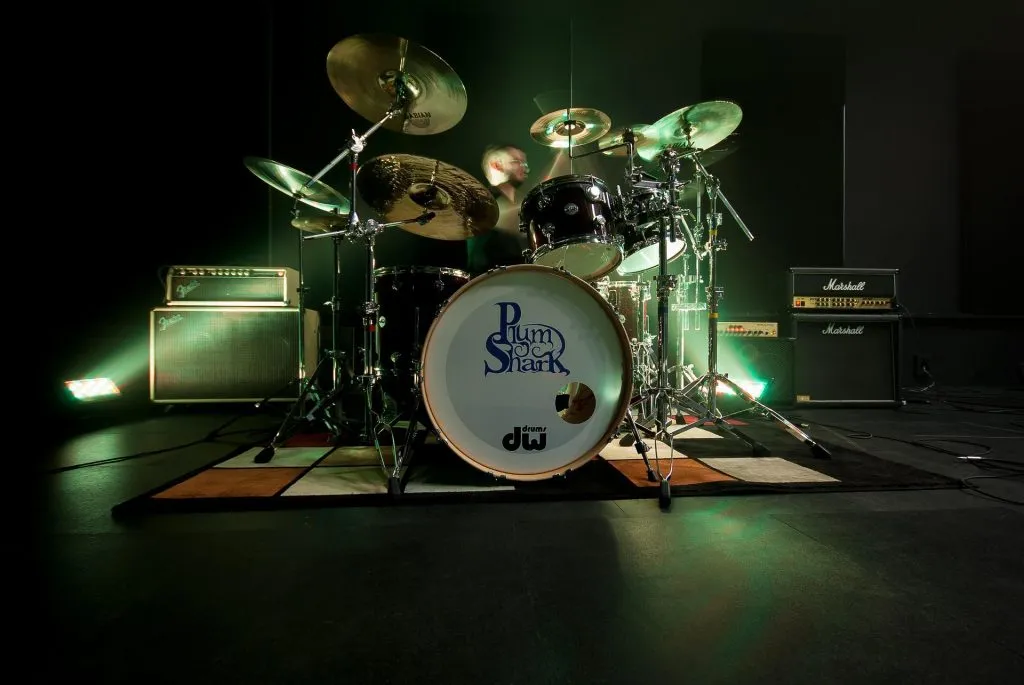
What is Groove?
If you asked 10 different experts, you’d probably receive 10 different answers to this question. Groove is not an objective skill, it can’t really be quantified or precisely measured like speed or accuracy. Simply put, a drum beat that grooves is a beat that perfectly complements and even emphasizes the energy, feel and atmosphere of the music being played. To a listener, a groovy drum beat won’t stand out unnecessarily or draw attention away from the overall sound, but will instead contribute and make it more complete.
Now solo drum beats can also groove, but the definition changes a bit. Since you are the only instrument playing, you get to define the overall sound instead of creating it with other players. However the main points still stand. A groovy drum beat is more felt than it is heard, and when you listen to a groovy drum beat you can instantly and effortlessly connect with it. These are the drum beats that you find yourself bobbing your head or dancing to.
If you’ve read this far and still don’t feel like you understand what groove really is, don’t worry. For starters, you are definitely not alone. Secondly, since groove is a subjective topic; it is tough to give it an objective description that makes sense to everyone. That is why we are now going to go through some examples of groovy and not so groovy drum beats and discuss exactly what does or does not them groove. First we will talk about the objective skills, like timing and dynamic control, that help create groove. Next, we will talk about the more subjective part; how choosing the right drums to play when constructing a drum beat affects groove.
Example 1 – Comparing a Groovy Beat to a Non-Groovy Beat
More Groovy Beat
Less Groovy Beat
You can hopefully hear the difference in quality between the two beats above, but can you articulate what exactly makes the second beat sound a lot better? I’m essentially playing the same notes in both beats (I added some additional fills in the second one, I couldn’t help myself), so it has to do with how I’m playing the notes. There are two main reasons why the second beat sounds better, timing and dynamic control. The timing/note spacing in the first beat isn’t great, and the accents and dynamics are seemingly random. The timing in the second beat is much tighter, and the accents are intentionally placed to give the beat a nice flow and sense of swing. Now we will take a deeper dive into timing and dynamics and how they can be used to influence groove.
Timing

Earlier we stated that groove is a subjective skill. This is true, however it does have some objective components, mainly timing and dynamic control. A main reason why the example above doesn’t really groove well is the timing is slightly off. The beat always ends in time on 4, however the note spacing within each measure is off, causing the beat to feel rushed at certain points. Here is an exaggerated example of poor note spacing.
Bad Note Spacing
Better Note Spacing
Not developing impeccable timing is a mistake plenty of novice drummers make. Many practice timing up until they can’t hear any obvious timing issues. This leads to more subtle timing mistakes that aren’t immediately evident but still bring the overall quality of their playing down. This is why it’s extremely important to practice regularly with a metronome, and pay attention to the strikes that don’t fall on the same time as a metronome click. Recording is your best friend here, the more you practice and really pay attention to the note spacing within your playing the more you will naturally begin to pick up on more subtle timing issues. Once you can hear them, it’s a lot easier to correct them when playing.
Dynamic Control

If you’ve ever tried to cover one of your favorite pro drummers, you may have noticed that even though you played the same notes as them, you didn’t sound quite like them. Obviously you probably aren’t playing the same kit as them, but you also most likely don’t have the same level of dynamic control. Dynamic control is the ability to control the velocity of each strike, accenting certain strikes to create rhythm and flow when playing. Pay attention to the hi-hat velocity in the beats below. In the first one it’s mostly consistent, creating a very straightforward, even feel. In the second one I accented every other strike to give the beat a little bit more swing. Towards the end of the second beat I played only the hi-hat to help make it a bit easier to hear as it’s quite subtle.
Straightforward Hi-hat pattern
Swing Hi-hat pattern
While I generally prefer the swing pattern, I don’t think either of these is inherently better or worse sounding. It’s all about understanding how the accents and strike velocity you play will affect the sound and feel of your beat, and then applying it based off of the vibe you’re going for.
Plenty of drum beats are designed with dynamic control or accents almost “built in”. For example, the classic 8/8 rock beat has a hi-hat on all 8 beats, with the bass drum and snare drum coming in on each downbeat (1 and 3 for the bass drum, 2 and 4 for the snare). this creates a very familiar “up and down” feel where you have the down beat accented followed by a lighter upbeat that foreshadows the coming down beat (one and two and three and four). In addition to stacking multiple drums on one note to accent, we can also use our dynamic control to create flow.
The Subjective Part of Groove Drumming

So we’ve covered two skills that objectively make your drumming groove, but you can’t ignore the subjective part of groove as well. Where you place your accents, what drums you choose to play, and ultimately how you construct a drum beat is going to sound better to some people and worse to others. That being said, there are some general rules or guidelines that can help to build groovy drum beats or beats that “fit” around the music being played.
Where to place accents
So we covered dynamic control, which includes the ability to subtly increase or decrease your strike velocity to create accents. However, the ability to effectively play accents is useless if you don’t know where you should be placing these accents. The purpose of an accent in my opinion is to highlight change or importance to a listener. You can use accents and your bass drum pattern in this way to create flow and direction when playing. A great example is transitioning from a verse to a chorus. In most cases you’ll hear all of the music become louder, creating the feeling that the music is progressing. Even within a verse or couple of bars, accenting a fill or the downbeat of a rhythm can help create a sense of flow.
Which drums to play
Another more subjective part of developing groove is simply choosing which drums to play and when. For example, keeping time on the ride cymbal vs the hi hats is going to alter the feel of the groove, even if nothing else changes. Another example could be swapping snare drum strikes for tom strikes during a fill. Learning how the different drum kit sounds affect the overall feel of a beat will help build your ability to groove. Instead of just playing the same combination of sounds all the time you’ll be able to intentionally select and swap in sounds that make sense.
Conclusion
Hopefully this article gave you some good insight on how to develop groove. I’ll caveat this by saying I’m not some drumming master or amazing teacher. I’ve played the drums in a bunch of bands for about 15 years and this is the opinion I’ve developed. I think it’s accurate and it’s helped me sound better, so my advice would be to try it and see if it helps you as well! In addition to developing your drum skills, having a solid kit is also important. We have lists comparing several of the best intermediate level kits on the market, as well as individual drum set reviews! Check them out if you’re looking for a new kit.
